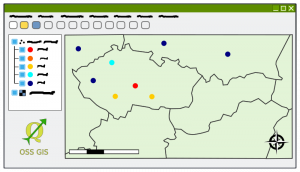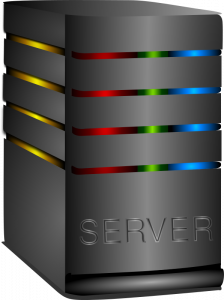H817 – 20b – Week 24 – Activity 18 Part 2 – Report
Introduction
This short report will attempt to highlight the changes required in our institution to achieve the management’s ambition of supporting learning and teaching by the use of learning analytics. The field of learning analytics is a complex and rapidly evolving one. This report will hopefully provide some clarity on the current developments in learning analytics and how they could successfully be applied in our context.
The definition of Learning Analytics suggested by Siemens (2010) has been stable on Wikipedia for the past ten years:
“Learning analytics is the measurement, collection, analysis and reporting of data about learners and their contexts, for purposes of understanding and optimising learning and the environments in which it occurs”
In order to implement learning analytics as suggested by this definition some changes to our culture and technical infrastructure will be required. It will also be necessary to identify the extent of the ‘support’ suggested by the vision statement.
Summary of current data collection and use
At the present time we collect various types of data about students. This includes personal details, attendance information as well as storing detailed logs of their activities on our Moodle VLE system and the Microsoft Teams application.![]()
Our current use of this data is mainly led by institutional processes. We allow students to access their personal details to inform us of errors. Timetabling and attendance data are checked and follow up interventions are initiated if erratic attendance patterns are observed. This is known as ‘academic analytics’ with the intention of reducing costs and increasing performance.
We use ‘checkpoint analytics’ in some circumstances to display to the student how far they have progressed in a learning activity or unit. We do not take into account the content of their contributions nor relate these to any other aspect of their work.
In other words, we do not currently use this data to support learning and teaching; To provide the student with suggested learning paths, nor to inform changes to pedagogical practice.
In order to successfully support teaching and learning a different approach to data collection and processing will be required. We will need to involve all stakeholders in this change and there may be a need to gain permissions from students (or guardians of vulnerable students) before we begin to use their data in a way which may, in effect ‘profile’ them.
Cultural Challenges
One of the most challenging aspects of a project such as this is rejection of the idea by the staff who are intended to implement it. Dawson et al. (2012) highlights many reasons why participants reject the implementation of new technologies and practices.
These include the perceived increased workload on staff, resistance to changes in eLearning techniques and rejection of policies which are perceived as ‘efficiencies’.
As with any new initiative it is vital to identify those Gachago et al. (2017) would describe as ‘champions’ to guide new ways of working. Those who can support and encourage other staff members throughout the lifetime of the project.
The Curriculum Managers will ultimately be responsible to ensure that they and their lecturing staff are doing their best to progress the project.
Technical Challenges
In order to support learning and teaching new types of analytic tools will need to be employed. The types of tools implemented will depend greatly on the scope of the implementation as queried in the introduction of this report.
There may cost implications in the form of new hardware or new ongoing software licensing costs.
The ICT Manager will be responsible for the specification and deployment of any hardware in consultation with software vendors.
 Some of these technologies are listed below with an outline of their potential uses:
Some of these technologies are listed below with an outline of their potential uses:
Dashboards: Many vendors such as Glantus (2020) provide a dashboard system. This type of system provides an instant visual representation of the current status of a student (which could be of value to the student themselves) or a course or department. Whatever the scope of the project, some form of visual reporting tool will be needed to track progress.
We may implement a technique known as Social Learning Analytics where we demonstrate how connected a student is with their peer group through the tracking of their Social Media posts, forum entries and contributions on the VLE.
More details of the various methods of recording Socialised Analytics are provided by Ferguson et al. (2012).
Tools such as netlytic.org (2020) can be used to visualise this information
We can track a students contributions across various websites using hypothesis.is (2020).
The products and analysis techniques can be finalised upon agreement of the detailed scope of the implementation .
Sustainability
There will be a requirement for ongoing staff training as the types and volumes of data collected and reporting tools may well be changing.
It is also vital that any funding requirements beyond the establishment of the new analytics reporting system are acknowledged beyond the perceived end of the implementation period.
Conclusion
In conclusion it seems feasible to implement learning analytics in our institution to support the stated vision. However, this is dependent on accurate scoping of the requirements and the co-operation of staff and students in the process.
References
Ferguson, Rebecca and Buckingham Shum, Simon (2012). Social learning analytics: five approaches. In: 2ndInternational Conference on Learning Analytics & Knowledge, 29 Apr – 02 May 2012, Vancouver, British Columbia,Canada, pp. 23–33.
Gachago, D., Morkel, J., Hitge, L., Van Zyl, I. and Ivala, E., 2017. Developing eLearning champions: a design thinking approach. International Journal of Educational Technology in Higher Education, 14(1), pp.1-14.
Glantus (2020) Glantus, Available at: https://www.glantus.com/ (Accessed: 20th July 2020).
Hypothes.is (2020) Annotate the web, with anyone, anywhere, Available at: https://web.hypothes.is/ (Accessed: 20th July 2020).
Macfadyen, L.P. and Dawson, S. (2012) ‘Numbers are not enough. Why e-learning analytics failed to inform an institutional strategic plan’, Educational Technology & Society, vol. 15, no. 3, pp. 149–63 (Online). Available at https://www.open.ac.uk/ libraryservices/ resource/ article:106516&f=28635 (Last accessed 19 July 2020).
Netlytic (2020) About, Available at: https://netlytic.org/home/?page_id=10834 (Accessed: 20th July 2020).